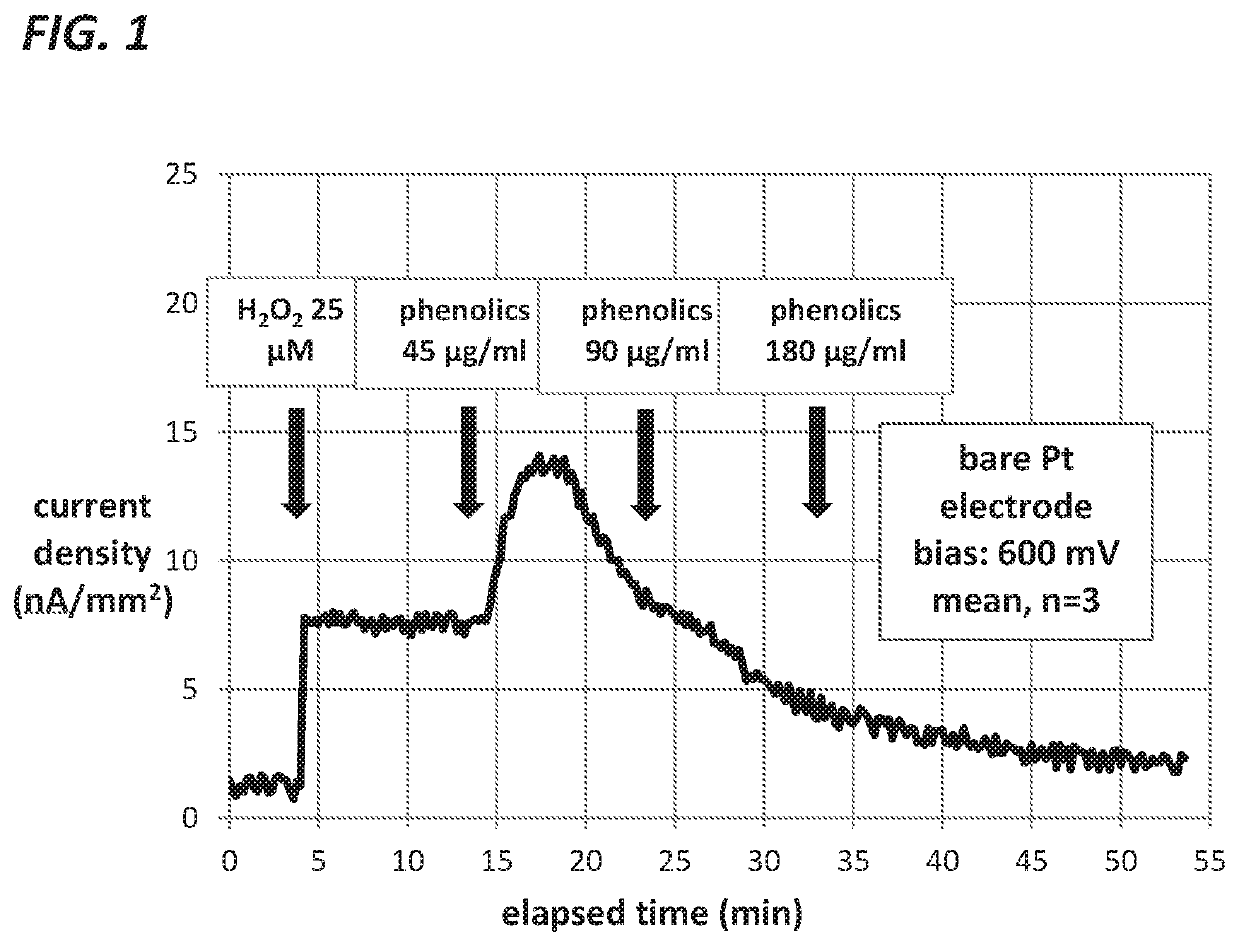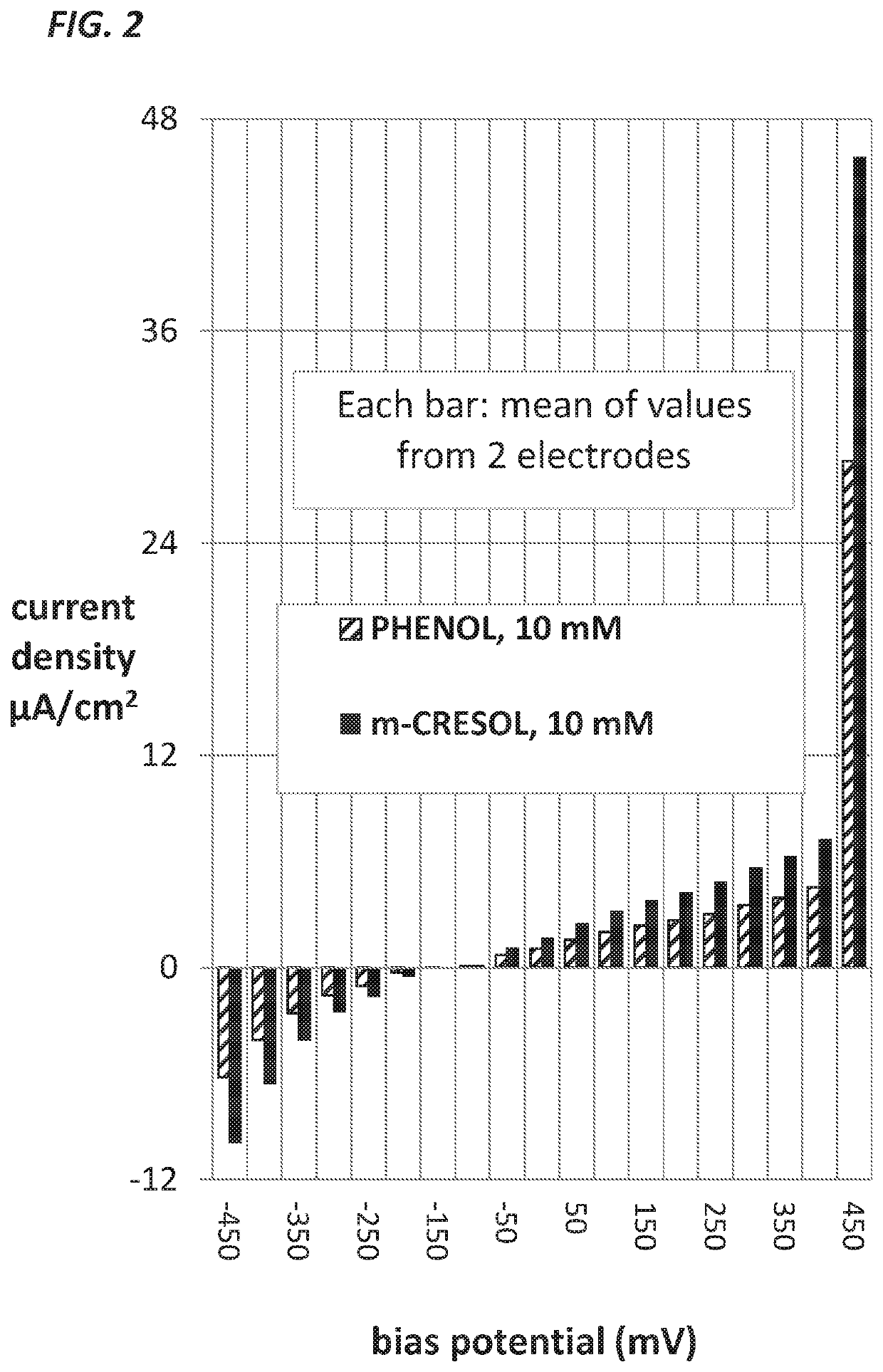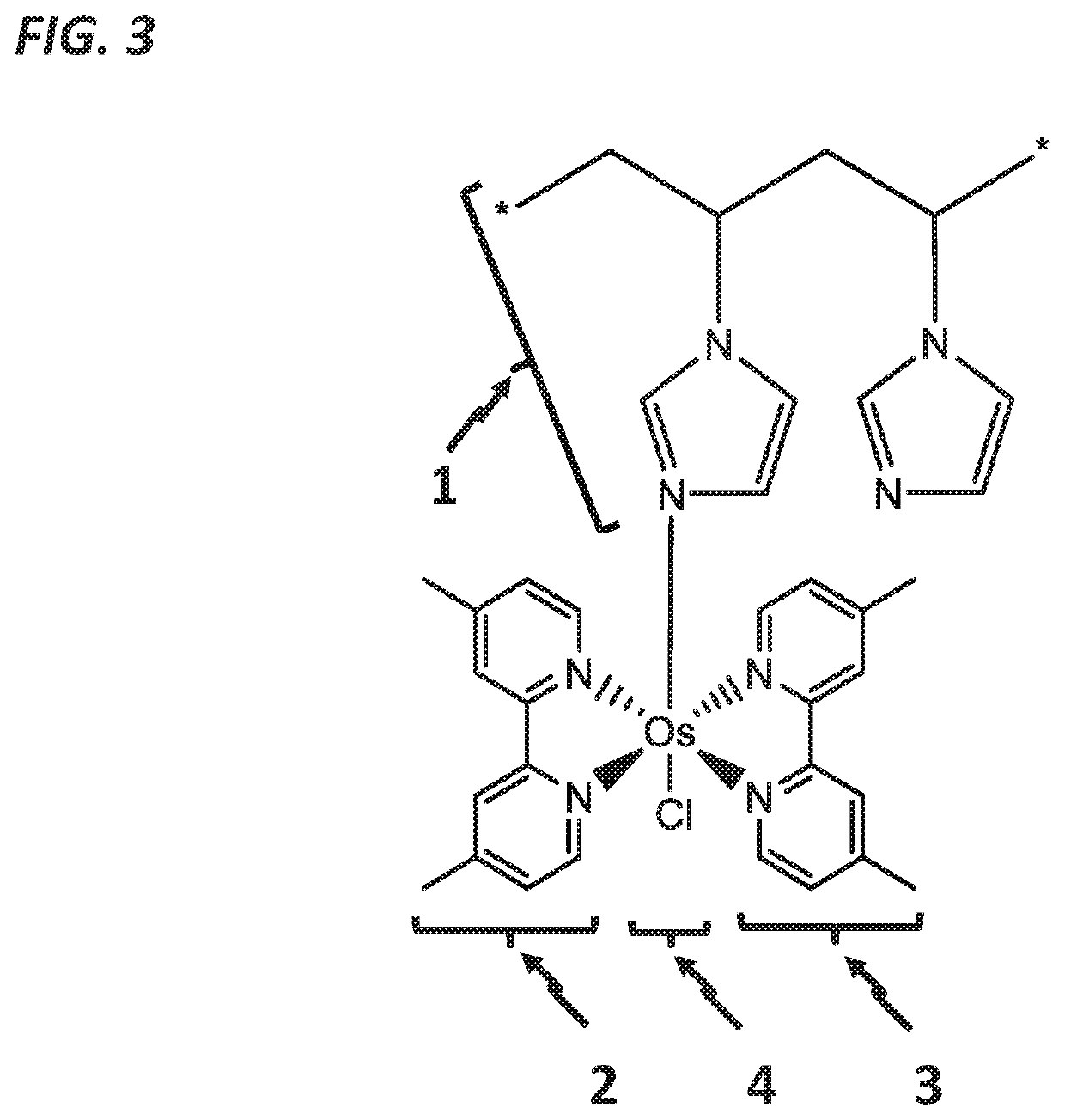Measurement of glucose in an insulin delivery catheter by minimizing the adverse effects of insulin preservatives
a technology of insulin delivery catheter and glucose measurement, which is applied in the direction of catheter, application, diagnostic recording/measuring, etc., can solve the problems of insufficient glucose current, device failure to function properly, and electrode film failure to be robust and durable, so as to avoid this fragility and minimize cost
- Summary
- Abstract
- Description
- Claims
- Application Information
AI Technical Summary
Benefits of technology
Problems solved by technology
Method used
Image
Examples
example 1
iator-Based Sensing Catheter
[0061]Laminate Metal Foil to Polymer Substrate:
[0062]Purpose: This step creates a laminate of titanium and polyimide (Ti / Pi). In this example, the Ti thickness is 5 μm and the polyimide thickness is 12.5 μm, though these dimensions should not be construed as limiting. This example creates a laminate rectangle whose dimensions are 60 mm×85 mm.
[0063]Materials include Deionized water; Polyimide sheet w / B-stage acrylate adhesive; Titanium foil; press pads; Teflon sheets, and graphite press plates, Heated hydraulic press capable of achieving 400 deg F.;
[0064]Plate setup process: Between the caul (pressure-applying) plates of the hydraulic press, materials should be stacked in the following order, from bottom to top: Graphite press plate; press pad; Titanium foil; Polyimide, with B-stage adhesive facing titanium foil; press pad; Graphite press plate.
[0065]Prepare graphite plate, graphite foil, and Teflon sheets prior to handling polyimide and titanium. All she...
example 2
n Using a Platinum Indicating Electrode with High Bias Potential
[0104]Many aspects of this example are the same as in Example 1. However, instead of Au being deposited, Pt is deposited by sputtering, using these sputter settings: Density=10.5, and Z-ratio=0.529.
[0105]No redox mediator is used. Glucose oxidase is applied along with a protein extender, bovine serum albumin. Glutaraldehyde crosslinker is used to link the amine groups of glucose oxidase and albumin and the weight ratio of glucose oxidase:albumin:liquid glutaraldehyde is between ranging from 6:4:5 and 6:4:1. The mixture applied to the Pt electrode is dried for at least 10 min at 40° C. Additional layers can be deposited to increase sensitivity to glucose. In such a case, dry the final coat for at least 20 min. Then rinse in stirred DIW for 10-15 minutes to remove unbound enzyme. Deposit two coats of outer membrane composed of 1.5-2.5% w / v polyurethane (PU) or copolymer of silicone and polyurethane deposited on the indica...
PUM
 Login to View More
Login to View More Abstract
Description
Claims
Application Information
 Login to View More
Login to View More - R&D
- Intellectual Property
- Life Sciences
- Materials
- Tech Scout
- Unparalleled Data Quality
- Higher Quality Content
- 60% Fewer Hallucinations
Browse by: Latest US Patents, China's latest patents, Technical Efficacy Thesaurus, Application Domain, Technology Topic, Popular Technical Reports.
© 2025 PatSnap. All rights reserved.Legal|Privacy policy|Modern Slavery Act Transparency Statement|Sitemap|About US| Contact US: help@patsnap.com



